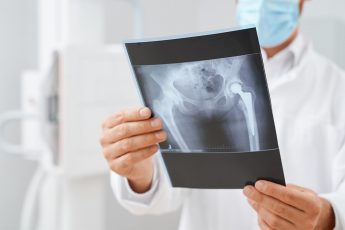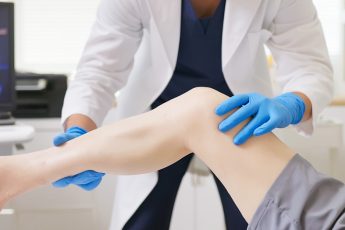
The Complete Guide to Pediatric Orthopedic Care: Everything You Need to Know
When it comes to the health and well-being of your child, there’s nothing more important than finding the right care. Pediatric orthopedic care is crucial in addressing musculoskeletal issues in children, ensuring their healthy growth and development.
In this comprehensive guide, we’ll walk you through everything you need about pediatric orthopedic care, from common conditions and treatments to tips for finding the best healthcare providers for your child’s needs.
We’ll delve into topics like scoliosis, sports-related injuries, fractures, and other conditions affecting your child’s bones, joints, and muscles. We’ll also explore the latest advancements in pediatric orthopedics and how they can benefit your child.
Whether you’re a parent seeking answers or a healthcare professional looking to expand your knowledge, this guide is your ultimate resource for the best pediatric orthopedic hospital in Dubai. With expert insights, practical tips, and actionable advice, you’ll be equipped to make informed decisions regarding your child’s musculoskeletal health. Get ready to embark on a journey of understanding, empowerment, and improved care for your little one.
Common Pediatric Orthopedic Conditions
Pediatric orthopedic conditions encompass a wide range of musculoskeletal issues that can affect children at different ages. Some of the most common conditions include scoliosis, osteogenesis imperfecta, and developmental dysplasia of the hip. Scoliosis, characterized by an abnormal curvature of the spine, typically becomes noticeable during adolescence. It can lead to physical deformities and, in severe cases, complications affecting lung function. Early detection through routine screening is crucial for effective management and treatment.
Another prevalent condition is osteogenesis imperfecta, commonly known as brittle bone disease. This genetic disorder leads to fragile bones that break easily, often with minimal or no trauma. Children with this condition may require specialized care and management strategies to prevent fractures and ensure safe physical activity. Additionally, developmental dysplasia of the hip is a condition where the hip joint does not properly form in infants and young children. If left untreated, it can lead to significant mobility issues and discomfort later in life.
Other conditions include limb deformities, such as clubfoot, which involves a misalignment of the foot and ankle, and sports-related injuries, such as fractures and sprains. As children become more active in sports, the risk of injuries increases, necessitating a focus on preventive care and education. Understanding these common pediatric orthopedic conditions is crucial for parents and caregivers, as early intervention can lead to better outcomes for children.
Diagnosis and Assessment of Pediatric Orthopedic Conditions
Accurate diagnosis and assessment of pediatric orthopedic conditions are essential for effective treatment and management. The process typically begins with a thorough medical history and physical examination conducted by a specialist. During the examination, the orthopedic physician will assess the child’s range of motion, posture, and any visible deformities. This assessment helps identify potential issues and guides the need for further diagnostic testing.
Imaging studies, including X-rays, MRI scans, and CT scans, are often employed to obtain a clearer picture of the child’s musculoskeletal system. These imaging techniques allow for the visualization of bones, joints, and soft tissues, helping to confirm diagnoses and determine the extent of any issues. For example, X-rays are standard for detecting fractures, while MRIs may be used to assess soft tissue injuries or conditions like scoliosis.
In some cases, additional diagnostic tests, such as blood tests or genetic testing, may be necessary to rule out underlying conditions or to confirm a diagnosis. Collaboration between specialists, such as pediatricians, orthopedic surgeons, and physical therapists, is vital for developing a comprehensive evaluation and treatment plan tailored to the individual child’s needs. By ensuring a thorough assessment, healthcare providers can better address the unique challenges associated with pediatric orthopedic conditions.
Treatment Options for Pediatric Orthopedic Conditions
Once you have consulted the Dubai orthopedic surgeon a variety of treatment options are available, tailored to the specific needs of the child. Non-surgical treatments are often the first line of defense and may include physical therapy, bracing, and medication for pain management. Physical therapy plays a crucial role in enhancing strength, flexibility, and overall function. A skilled therapist can devise a personalized exercise program focused on improving the child’s mobility and reducing discomfort.
Bracing is another common non-surgical intervention, particularly for conditions like scoliosis or developmental dysplasia of the hip. In scoliosis, for instance, a brace may be used to prevent further curvature of the spine as the child grows. The effectiveness of bracing depends on various factors, including the child’s age, the severity of the curvature, and adherence to wearing the brace as prescribed. Regular follow-up appointments are necessary to monitor progress and make adjustments as needed.
In more severe cases, surgical intervention may become necessary. Surgical options can range from minimally invasive procedures to more extensive surgeries, depending on the condition and its severity. For example, spinal fusion may be indicated in severe scoliosis cases to correct and stabilize the spine. Orthopedic surgeons will carefully evaluate the risks and benefits of surgery, ensuring that parents and patients are well-informed about the potential outcomes. Ultimately, the goal of treatment is to improve the child’s quality of life while promoting healthy growth and development.
Surgical Interventions in Pediatric Orthopedics
Surgical interventions in pediatric orthopedics are often considered when non-surgical treatments fail to provide adequate relief or when a condition poses a significant risk to a child’s health and development. The decision to proceed with surgery involves a thorough evaluation of the child’s condition, overall health, and specific needs. Families need to have open discussions with their healthcare team to understand the rationale for surgery and what to expect during the recovery process.
Common surgical procedures in pediatric orthopedics include corrective surgeries for scoliosis and limb deformities, as well as fracture repair. In scoliosis surgery, the surgeon may use rods, screws, or other devices to stabilize the spine and correct its curvature. This procedure is typically performed in adolescents with severe curvature that is likely to worsen. Similarly, limb deformity correction may involve osteotomy, where the bone is cut and repositioned to achieve proper alignment.
Post-operative care is a critical component of surgical interventions. After surgery, children may require a period of immobilization in a cast or brace, followed by rehabilitation to regain strength and mobility. Parents play a vital role in supporting their child’s recovery, ensuring they adhere to follow-up appointments and rehabilitation protocols. The long-term success of surgical interventions relies on a combination of skilled surgical techniques, diligent post-operative care, and ongoing support from healthcare providers and family members.
Rehabilitation and Physical Therapy for Pediatric Orthopedic Patients
Rehabilitation and physical therapy are integral components of pediatric orthopedic care, focusing on restoring function, enhancing mobility, and alleviating pain following injury or surgery. The rehabilitation process begins with a comprehensive assessment by a physical therapist who specializes in pediatric care. This assessment helps identify specific areas of weakness or limitation, allowing for the development of a personalized treatment plan.
Therapeutic exercises are often central to rehabilitation, aimed at strengthening muscles, improving flexibility, and restoring range of motion. For instance, following a fracture, a child may engage in exercises that gradually increase in intensity as they recover. The therapist will also educate the child and their family on proper techniques and activities to promote healing while preventing further injury. Incorporating play and age-appropriate activities into therapy can enhance engagement and compliance, making rehabilitation more enjoyable for young patients.
In addition to physical exercises, therapists may utilize modalities such as ultrasound, electrical stimulation, or heat therapy to alleviate pain and promote healing. Occupational therapy may also be beneficial, helping children regain functional skills needed for daily activities. The rehabilitation journey may vary in duration and complexity, depending on the specific orthopedic condition and the child’s progress. By actively participating in rehabilitation, children can achieve optimal recovery and return to their normal activities and sports.
Preventive Measures for Pediatric Orthopedic Health
Preventive measures play a crucial role in maintaining pediatric orthopedic health and reducing the risk of musculoskeletal issues. Early intervention and education can help parents and caregivers implement strategies that promote healthy bone and joint development. Regular check-ups with a pediatrician are essential, as they can identify potential concerns early on and provide guidance on maintaining physical health.
Encouraging active lifestyles is one of the most effective preventive strategies. Engaging in regular physical activity helps strengthen muscles and bones, enhancing overall musculoskeletal health. Parents should promote a variety of activities, from sports to outdoor play, ensuring that children develop different skills and avoid overuse injuries. Additionally, teaching proper techniques for sports and physical activities can significantly reduce the risk of injury.
Another vital aspect of prevention is nutrition. A balanced diet rich in calcium and vitamin D is essential for healthy bone development. Parents should be mindful of their child’s dietary habits, ensuring they receive adequate nutrients to support growth. Limiting sedentary activities, such as excessive screen time, is equally important, as it encourages children to engage in more active pursuits. By fostering a supportive environment that prioritizes physical health and well-being, families can help ensure their children enjoy a lifetime of strong bones and joints.
Choosing a Pediatric Orthopedic Specialist
Selecting the right pediatric orthopedic specialist is a critical decision that can significantly impact your child’s care and outcomes. When seeking a specialist, consider factors such as their experience, credentials, and the range of services they offer. It’s essential to choose a physician who is specifically trained in treating children, as their approach and understanding of pediatric musculoskeletal issues differ from adult orthopedic care.
Parents should also seek recommendations from trusted sources, such as pediatricians, family members, or friends who have had positive experiences. Researching potential specialists online can provide valuable insights into their expertise, patient reviews, and any specialty areas they focus on, such as sports medicine or trauma care. Scheduling an initial consultation can help assess the physician’s approach to care and ensure that the specialist is a good fit for your child’s needs.
Communication is key when working with a pediatric orthopedic specialist. Parents should feel comfortable asking questions and expressing concerns about their child’s condition and treatment options. A good specialist will take the time to explain diagnoses, treatment plans, and expected outcomes in a way that is easy to understand. Building a collaborative relationship between the family and the healthcare provider is vital for ensuring the best possible care for your child’s orthopedic needs.
Support and Resources for Parents of Children with Orthopedic Conditions
Navigating the world of pediatric orthopedic care can be overwhelming for parents, especially when dealing with a child’s diagnosis. Fortunately, numerous resources and support networks are available to assist families throughout their journey. Parent support groups, both online and in-person, can provide a sense of community and shared experiences. Connecting with other parents facing similar challenges can offer emotional support and practical advice on managing care.
Educational resources, such as pamphlets, online articles, and videos, can help parents understand their child’s condition and treatment options better. Many pediatric orthopedic clinics also provide educational materials tailored to children and families, ensuring that everyone involved is informed and prepared. Engaging with reputable organizations dedicated to specific conditions, such as scoliosis or osteogenesis imperfecta, can provide additional resources and support for families seeking guidance.
Moreover, families should not hesitate to reach out to healthcare providers for additional information and recommendations. Many specialists are more than willing to provide resources, including referrals to physical therapists, occupational therapists, or local support groups. Building a strong support system and accessing resources can empower parents to advocate for their child’s needs effectively and navigate the complexities of pediatric orthopedic care with confidence.
Conclusion: Ensuring the Best Possible Care for Your Child’s Orthopedic Needs
In conclusion, ensuring the best possible care for your child’s orthopedic needs involves understanding the common conditions, diagnostic processes, treatment options, and resources available. Pediatric orthopedic care is a multifaceted field that requires collaboration between healthcare providers, specialists, and families. By staying informed and proactive, parents can play a vital role in their child’s health journey.
It’s essential to recognize the importance of early diagnosis and intervention, as many pediatric orthopedic conditions can be effectively managed with timely treatment. Building a strong partnership with a qualified pediatric orthopedic specialist can provide families with the guidance and support necessary to navigate challenges and make informed decisions.
Ultimately, the goal of pediatric orthopedic care in Dubai is to promote healthy growth, mobility, and an active lifestyle for children. By prioritizing preventive measures, seeking appropriate care, and utilizing available resources, families can help their children thrive and enjoy a bright, active future. Through education, support, and advocacy, parents can ensure their children receive the best orthopedic care possible, paving the way for lifelong musculoskeletal health.




